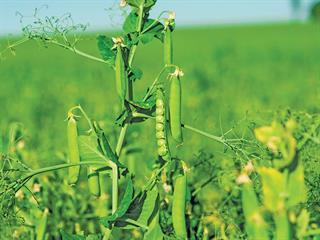Between 2008 and 2012, Monsanto USA will launch multiple game-changing technologies and create greater growth from seeds and traits. So said Monsanto president Hugh Grant on 12 August, when he gave investors a first-hand look at next-generation products at the Monmouth facility’s working research fields. “Our innovations have the potential to double yields for our customers in corn, cotton and soya beans by 2030,” Grant said. centrepiece of Monsanto’s event was Roundup Ready 2 Yield soya bean technology, which the company said is on track for a controlled commercial release on 1 million acres (334 450ha) to 2 million acres (668 901ha) in 2009.
Kobus Steenekamp, Monsanto SA biotech marketing manager, said there was no major difference between the current Roundup Ready soya bean on the market and the new Roundup Ready 2 Yield. “Roundup Ready already gives farmers access to the weed-control technology. The real difference is Monsanto has tried to optimise the positioning of the gene in the DNA to increase the intrinsic yield with Roundup Ready 2. They are talking about soya bean yield increases of 7%/ha to 11%/ha which translates into higher income for farmers.”
A t a soya bean price of R4 000/t, this extra yield advantage over first-generation Roundup Ready varieties would generate an additional R840/ha to R1 320/ha, said Steenekamp. He said Monsanto was likely to begin local trials with Roundup Ready 2 Yield soya bean this season but it would be at least two to three years before farmers could buy the new high-yield technology. “It takes two or three years of trials before we can apply for a general release in SA. We also have to introduce that new trait into local material,” Steenekamp said.
The Roundup Ready 2 Yield soya bean was the first new biotechnology trait to launch in more than a decade and the first yield-enhancing trait for soya beans. Monsanto highlighted a number of other key soya bean products under development and which would be stacked with the Roundup Ready 2 Yield trait. These include: dicamba-tolerant soya beans, soya beans containing an intrinsic yield trait that would provide additional yield on top of the Roundup Ready 2 Yield trait, a product which produces omega-3 fatty acids and one that produces a high stability soya bean oil that eliminates trans fats and reduces the saturated fat content of soya bean oil.
Grant said the relaunch of the soya bean platform followed the success of the company’s maize business in the US and internationally. In the 2008 financial year, gross profit in the maize seeds and traits business is expected to grow by about 25%. further 25% to 30% is expected in 2009, growth which Monsanto attributes to the value being delivered to farmers through high-yielding hybrids.
US Farmers planted about 28 million acres (11,33 million hectares) of Monsanto’s triple-stack corn in 2008, above original projections of 27 million acres (10,93 million hectares). For 2009, Monsanto expects triple-stack acreage will grow between 34 million acres (13,76 million hectares) to 35 million acres (14,16 million hectares). Grant said Monsanto was making progress with its next generation of biotechnology traits, including drought-tolerant maize. – Robyn Joubert
Standard Bank banks on biological farming
Standard Bank voiced its support for biological farming at the recent Biofarm forum in Goudini. D aneel Rossouw, Standard Bank’s Western Cape manager of agricultural markets, told delegates that conventional farming methods, which focus on feeding the plant while the soil ecosystem is ignored, have proved unsustainable over the long term and resulted in worse quality produce at a higher cost. In fact, farmers became poorer over time because of this system.
Biological farming, in contrast, can significantly reduce input costs and increase profits, while improving soil and livestock health, Rossouw said. It can be seen as a shift away from working against nature, to maximising nature’s power. It’s holistic and sustainable and improves soil quality, thereby improving plant and livestock health. Biological farming is also a more environmentally friendly approach to production. “Global consumers’ demands for healthy food are growing at an exponential rate, as is the willingness to pay a premium price for it,” Rossouw said.
He went on to refer to the many and Zimbabwean farmers that have moved to neighbouring countries. “These countries’ agricultural potential and climates are much better than in and it’s expected that they’ll soon establish themselves as net exporters of food as their infrastructure develops,” he explained. “This will place even more pressure on our local agricultural industry and force us to find alternative methods to remain competitive.” Rossouw said it is important that biological farming is taught to emerging farmers to enhance their success rate. – Glenneis Erasmus









